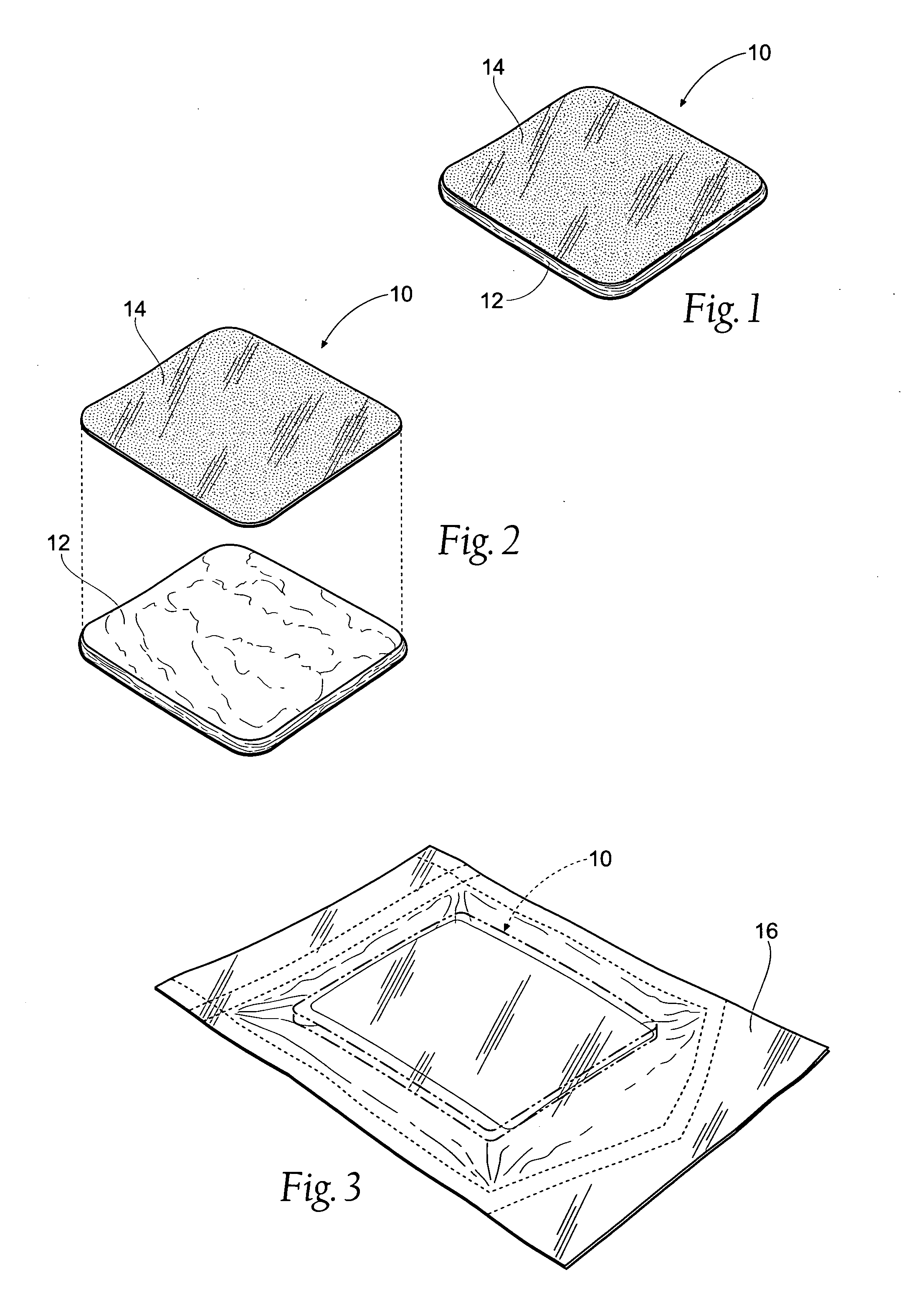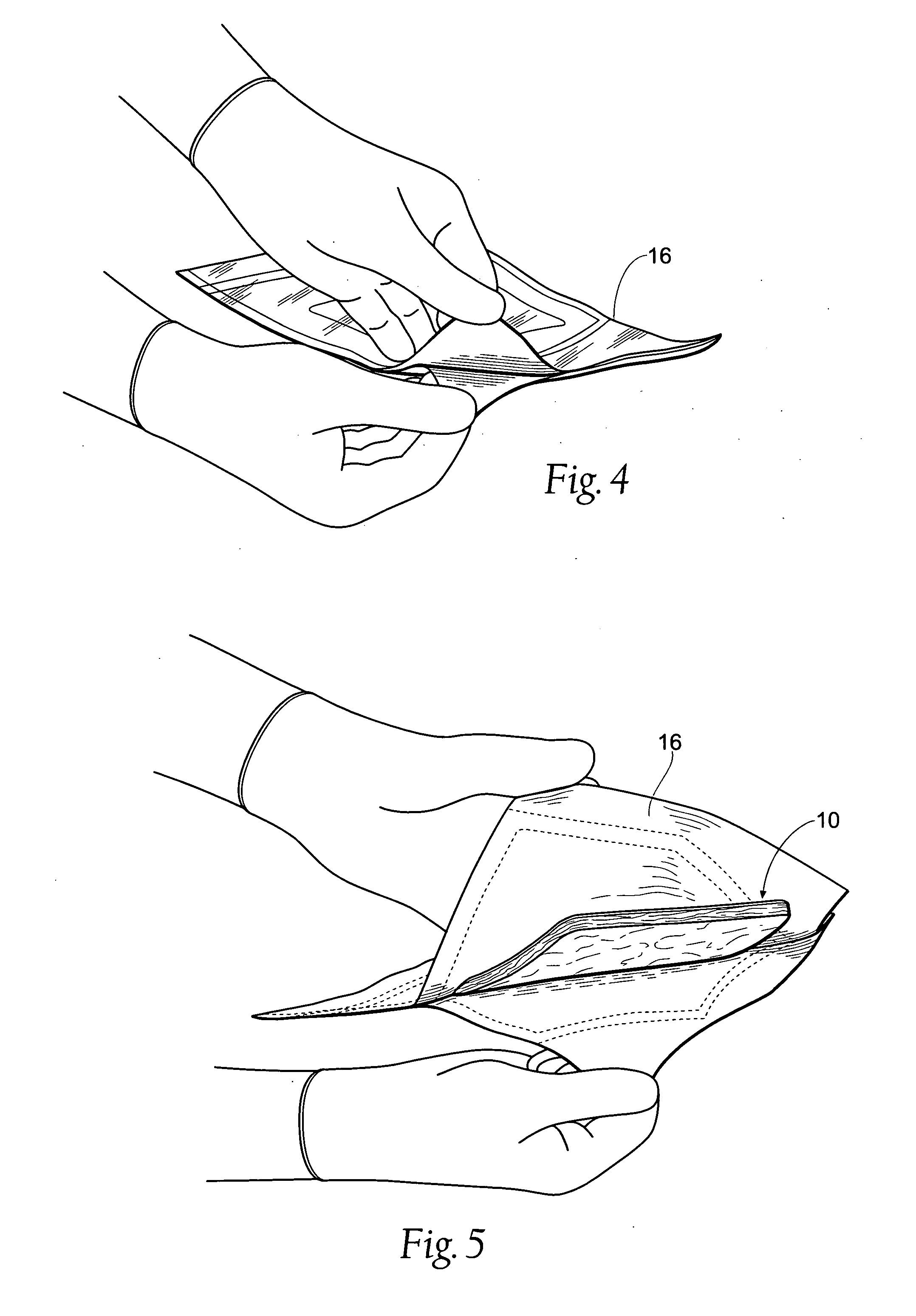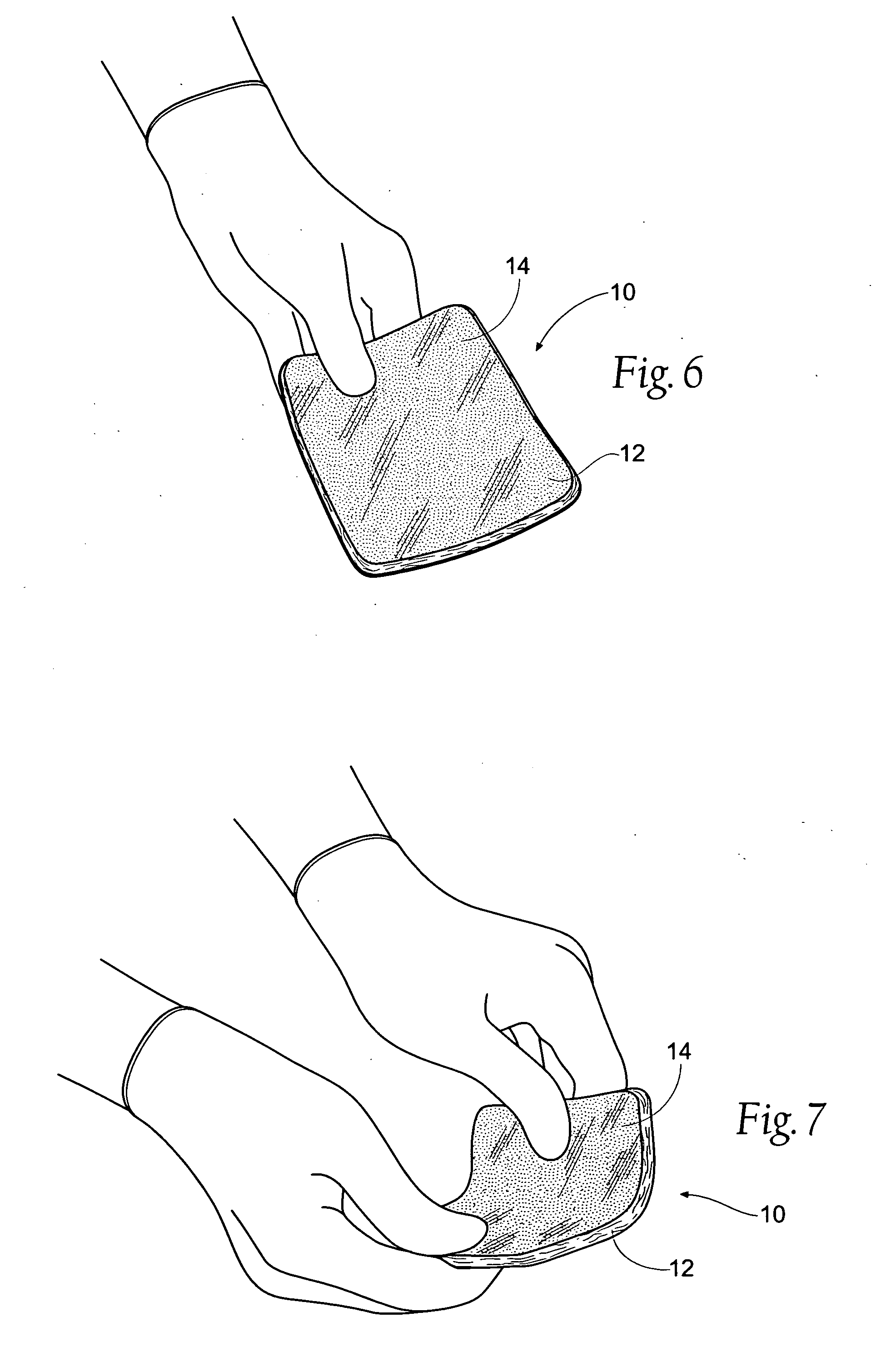Tissue dressing assemblies, systems, and methods formed from hydrophilic polymer sponge structures such as chitosan
a sponge structure and hydrophilic polymer technology, applied in the field of tissue dressings, can solve the problems of unable to effectively and safely halt severe blood flow, insufficient resistance of dressings to dissolution in high blood flow, and a major survival problem, and achieve the effect of long-lasting resistance to dissolution during us
- Summary
- Abstract
- Description
- Claims
- Application Information
AI Technical Summary
Benefits of technology
Problems solved by technology
Method used
Image
Examples
example 1
Usage Action Reports
[0118] Action reports by combat medics in operations in and during freedom operations in Afghanistan and Iraq have shown successful clinical utility for the dressing pad assemblies without adverse effects. The US Army Institute for Surgical Research at Fort Sam Houston in Texas evaluated the dressing pad assembly 10 in trauma models with severe life threatening bleeding and compared this dressing to standard 4×4 inch cotton gauze dressings. The tissue dressing pad assembly 10 significantly decreased blood loss and decreased resuscitative fluid requirements. Survival at one hour was increased in the group to which the tissue dressing pad assembly 10 was applied, compared to the cotton gauze survival group. Combat medics have successfully treated bullet wounds, shrapnel, land mine and other injuries, when conventional wound dressings have failed.
[0119] C. Manufacture of the Tissue Dressing Pad Assembly
[0120] A desirable methodology for making the tissue dressing...
example 2
The Aging Phenomenon
[0168] A procedure was initiated to retest lots that had failed initial testing, because an apparent increase in adhesive efficacy performance over time had been observed, including better performance at six and twelve months than immediately following production.
[0169] The following data was derived from seven lots of tissue dressing pad assemblies that had failed final product testing and were retested after a minimum of two months aging. The “Pressure” in Tables 1 and 2 is the highest pressure state at which ultimate failure occurred for test samples (i.e., the burst strength), as described above. As Tables 1 and 2 show, six of seven lots demonstrated an increase in performance, which, for most of them, was a dramatic increase.
TABLE 1Increase in Adhesive Properties Due to Aging PhenomenonOriginal ResultsAged ResultsPad AssembliesPad AssembliesAbove MinimumAverageAbove MinimumAverageProduct Lot #DatePressurePressureDatePressurePressure(PL88)Feb. 25, 200465%...
example 3
Swine Femoral Artery Injury Study
[0188] Chitosan pad assemblies were mechanically pre-conditioned for improved flexibility and compliance, as described above, for use in a 240 minute, severe-bleeding injury model. Swine (N=14), of near 45 kg each, were anaesthetized (Telazol induction, buprenorphine, isoflurane in oxygen) with monitoring of mean arterial pressure and cardiovascular support with crystalloids and hypertonic saline. Transverse skin and muscular incisions to simulate a wound, not following tissue planes as would occur in normal surgery, were made in left and right groin areas of each animal to expose and partially isolate left and right femoral arteries. The exposed femoral arteries were 2.5 cm to 4.0 cm below the external tissue surface. Bupivacaine was administered over the exposed femoral artery, prior to making the injury, as an analgesic, and also to reduce vasospasm. The femoral artery injury, at 1-2 cm from the inguinal canal, was made, by perforation with a 2.7...
PUM
| Property | Measurement | Unit |
|---|---|---|
| density | aaaaa | aaaaa |
| size | aaaaa | aaaaa |
| density | aaaaa | aaaaa |
Abstract
Description
Claims
Application Information
 Login to View More
Login to View More - R&D
- Intellectual Property
- Life Sciences
- Materials
- Tech Scout
- Unparalleled Data Quality
- Higher Quality Content
- 60% Fewer Hallucinations
Browse by: Latest US Patents, China's latest patents, Technical Efficacy Thesaurus, Application Domain, Technology Topic, Popular Technical Reports.
© 2025 PatSnap. All rights reserved.Legal|Privacy policy|Modern Slavery Act Transparency Statement|Sitemap|About US| Contact US: help@patsnap.com



